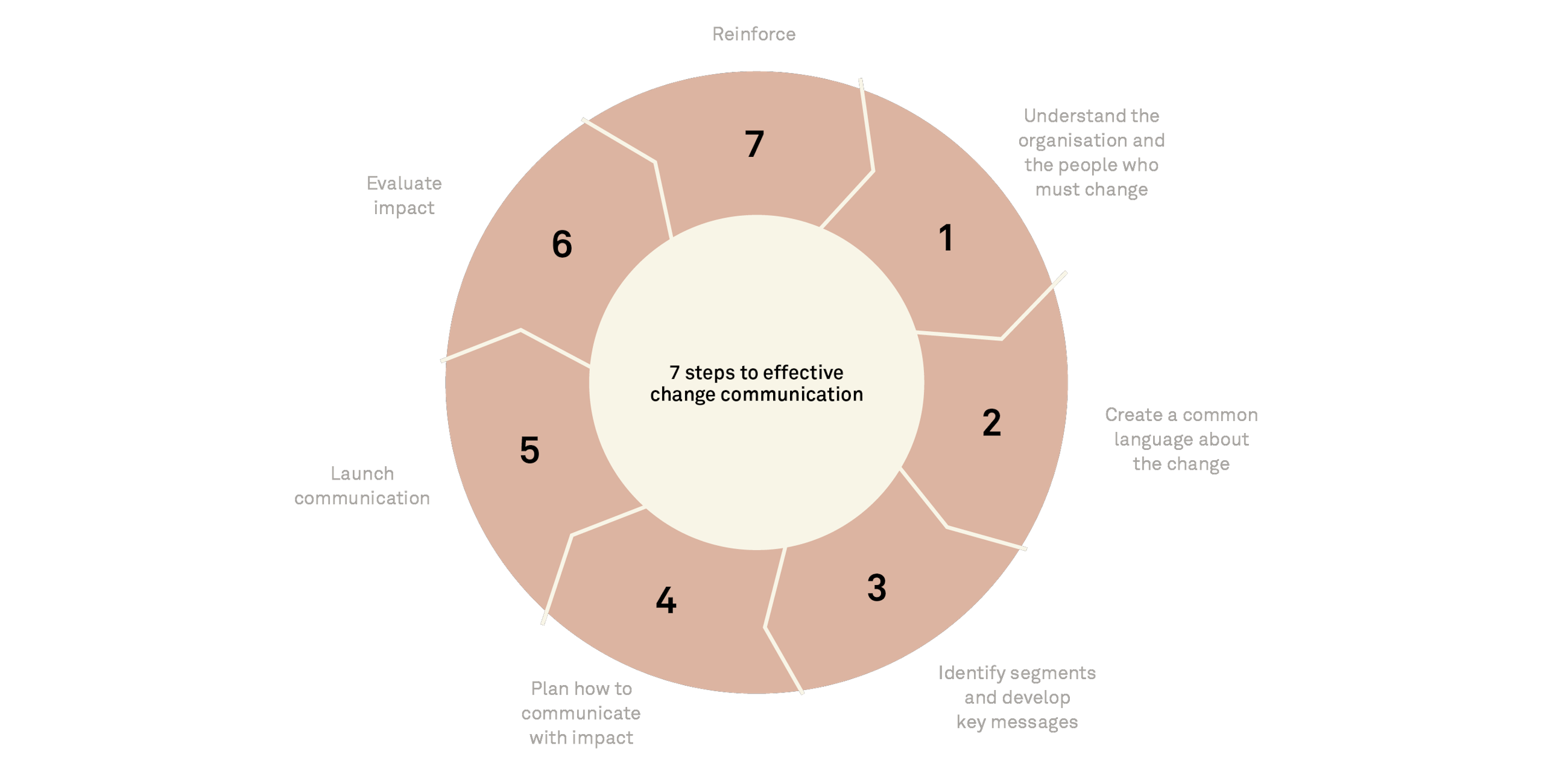An article series on getting the full impact from your transformations
26 May 2021
Traditional top-down communication is not about communication. It is one-way information. And it does not work.
‘Change communication’ on the other hand, does. It links strategy and people. Management and employees. And it has the power to maximise the impact of transformation projects.
This article series sums up thoughts and perspectives from years in the field and more than 400 projects with public and private organisations globally.
The articles in the compendium
The missing link in change programmes
An invitation to think differently
Linking the strategic rationale to personal motivators
Five principles to ensure profitable change communication
Changing habits
How to involve the organisation, create engagement and offer insights
Facing a truth that may hurt
Great communication will not change attitudes - but behaviour will
University of Oxford and Implement have something in common
The more complicated the project, the greater the need for change communication
Where is the fun?
Why humour is an underrated tool in change communication
Clarity in crisis
From confusion and uncertainty to strength and resilience
Perception vs Reality
Does management control the strategy roll-out communication or do employees?
Change communication is neither an art form nor entertainment. It is a medium of information and communication and of course change management. Combining these two proud individual disciplines can create something that can unlock even the most difficult and complex transformations.
As we see it, change communication is the missing link between strategy and people. Between management and employees.
Over the years, we have written extensively about change communication and how to use it to succeed with transformations.
Now, for the first time, we have collected these reflections in a series of 10 articles.
Change happens in conversations, so get people talking
Change communication itself does not necessarily drive change – but it plays a vital role after a change initiative is released by reinforcing a new pattern of attitudes.
Good communication creates a buzz and starts conversations. It filters into our workplace and everyday lives. Because as humans we are curious. Curious to know what our colleagues are thinking, and so we start discussing the change ourselves. This is when the change starts to become real. And the oganisation is mobilised.
Related0 8
Change Communication: An invitation to think differently
Change communication enters the scene when you have to link the strategic rationale behind the change and the personal m...Five principles to ensure profitable change communication
Five principles of how to design successful change communication that will create impact in your organisation.The University of Oxford and Implement have something in common
How to manage successful change in large IT projects.Where is the fun in change communication?
Why humour is an underrated tool in change communication.Clarity in crisis communication
How to get your message across while also making sure employees feel reassured.Perception vs Reality
Perception: Management controls the strategy roll-out communication. Reality: Employees control the strategy roll-out c...Want to know more?0 4
Get in touch with our change communication experts:










